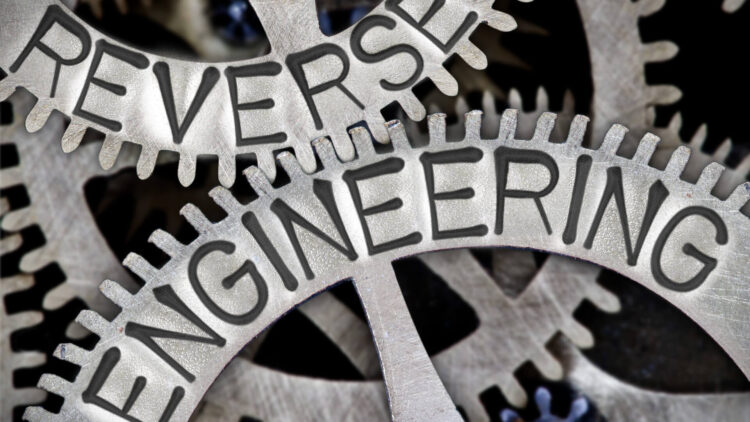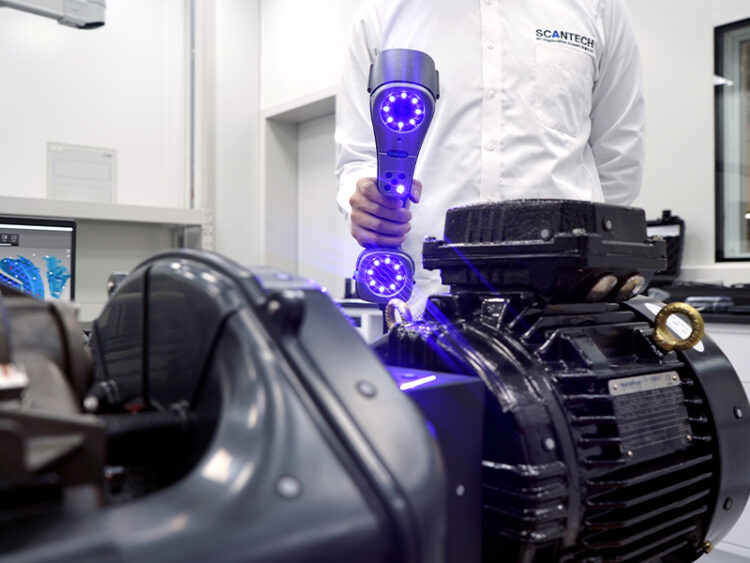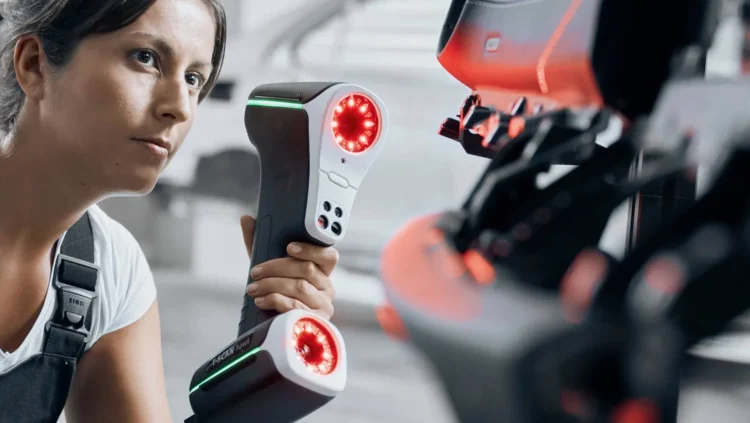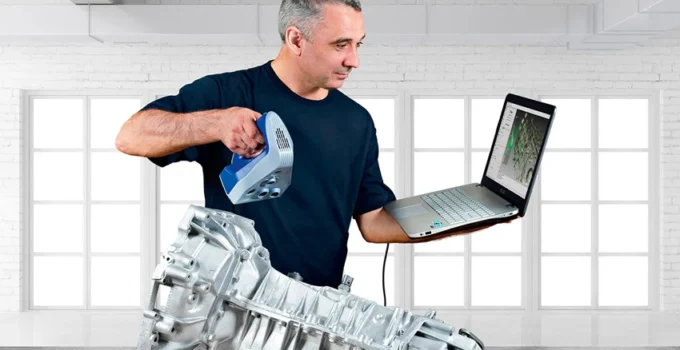The rise in popularity of the 3D scanners has made a great impact on the reverse engineering process. Sometimes, we have no information about the design of a piece of hardware. Instead of trying to build it by ourselves, with the use of 3D scanners we can simply analyze it, and recreate it.
In this article, we’ll explain the 3D scanning and reverse engineering process with a couple of tips to understand it better. In addition, we will provide a simple guide to scanning items and how to process them further. Keep reading, and find out how interesting and important this process is.
Page Contents
How do 3D scanners work
A 3D scanner is a device that determines and recognizes the shape and size of any object. It consists of a light source, and a sensor or a camera to receive feedback information.
When the process begins, the laser or lighting patterns get in contact with the object, while the sensors are receiving information about the shape and size. During the scanning process, there are triangulation and calculations in the background that determine how far the object is and all its structural characteristics.
When all the points are registered, we get a picture that looks like a cloud consisting only of the dots that the scanner has recognized. With the process of meshing, all the dots are getting connected into a model.
Texture recognition comes right after. The scanner analyzes the texture of the examined object and applies it to the mesh model. Every particle holding a V and U value gets saved and has a color. The texture is registered using a special sensor on the scanner. If you’re interested in seeing such a device at work, check this.
To come up with a full model, a couple of scans are required. The object is scanned from multiple angles and sides where everything gets overlapped and combined at the end. During the scanning process, we have to be careful not to miss a single point to prevent inaccurate models.
Explanation of reverse engineering

Source: searchengineland.com
The process where an existing model is scanned and transferred digitally to come up with a new product is reverse engineering. It is usually used to learn more about how an object functions by scanning its components. This helps in explaining how complex machinery works.
In addition, whenever a manufacturer forgets how they came up with a certain part, they can easily scan it, and analyze it further digitally. With enough resources and time, everything can be reversely engineered. This is a highly beneficial process since we got lots to learn from already build products and objects.
How do 3D scanners find the part in reverse engineering
If you have an idea to create new products with the help of objects that currently exist, but you don’t have a computer-aided design, 3D scanners are your friend. With the ability to simply scan every object you want, your can come up with any product you want.
As an example, you can create spare interior parts in the automotive industry. Let’s say the plastic on your vents has broken, or you simply want to modify it. By doing a simple scan and using software to modify, the result will be a model that fits in place and surely increases your enjoyment.
How does an object gets scanned for reverse engineering
To help you understand how the process goes, in the following we have the steps of the 3D scanning and reverse engineering process.
Preparation of the object
The first thing that has to be done before the scanning begins is the preparation of the object you are trying to turn digital. This means that you have to reduce the gloss of the item to prevent accidental mistakes and inaccuracy.
You must understand that if the surface is reflective or transparent, the scan cannot be done. For that reason, you should consider using a temporary spray that turns the surface into matte color.
Scanning

After preparing the object, it is time to perform the scanning process. Be sure to use a scanner that offers high precision and accuracy so you can come up with a great model. The most common options are laser tabletop scanners. However, a handheld is also a great choice. Just be sure to perform multiple scans to be sure that the model is accurate enough.
Come up with a mesh
As mentioned above, initially, there is only a cloud of dots that the scanner has recognized. After that, everything gets connected into a model using the meshing process.
However, some scanners make the mesh too complex which results in a large file that is hard to work with. To make everything simpler, just reduce the model as much as you can without reducing its quality.
Insert the model in CAD
After you have reduced the model, it is time to insert it into any CAD program that is comfortable for you. just be sure that the program has enough reverse engineering options, and you should be good.
This is the time when you have to extract all the surfaces you need from the model. There are a couple of ways you can accomplish this step which include an automatic surface option, doing that manually, and semi-automatically. Each option has its benefits and situations where they are superior to the others.
Time for modifications
As soon as you convert the scan into a solid digital model, it is time to add the modifications you wanted. This is the process where you mix your creativity with usefulness. Just be sure to use the dimensions of the scanned object to maintain fitment.
Print the model
The last thing that remains is printing the model you have successfully created. This is the part of the process where you feel the best because all the work has paid off. Depending on the application purpose of the model, different materials can be used for printing. See what is best for your project, and keep on working.
Conclusion

Source: all3dp.com
Reverse engineering using a 3D scanner is one of the things that have numerous application possibilities. It can be both used to come up with your own products, or just keep on learning how complex systems and machinery work.
No matter the case, it is one of the most interesting methods of work, and people are getting interested in it by storm. If you are a creative person who has an eye on technology and building things, this is something you might consider doing in the future. Both as a hobby or a career path.





